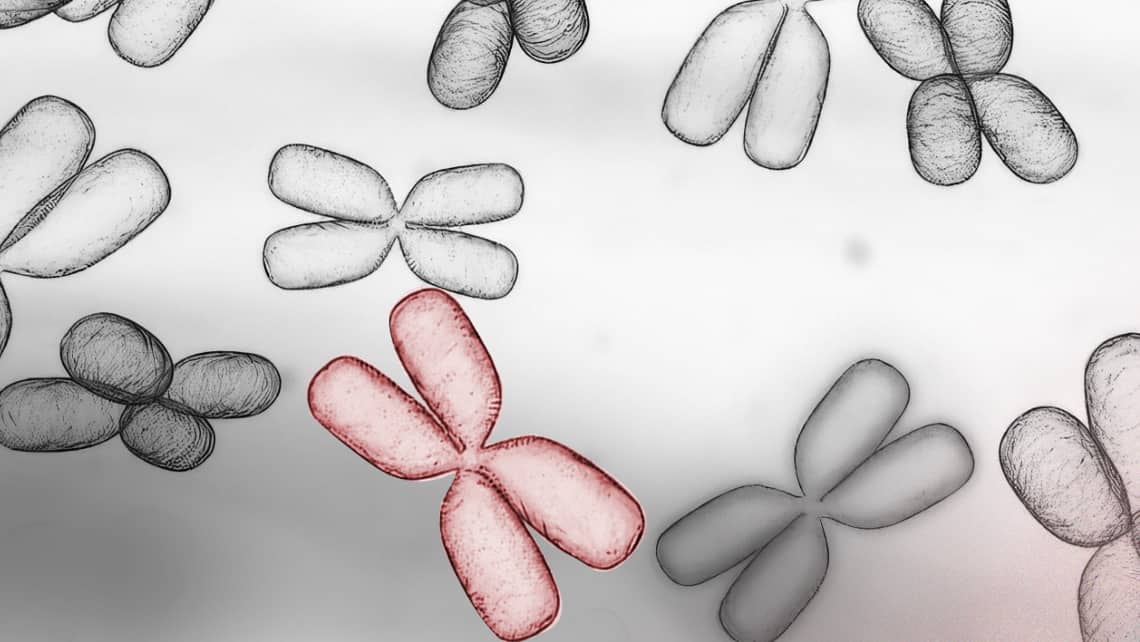
Structural chromosome abnormalities: how do they impact the embryo and the carrier?
In comparison with the general population, there is a greater prevalence of chromosomal abnormalities amongst couples with reproduction issues. An analysis of the 46 chromosomes (23 pairs), DNA structures and highly-organised proteins that contain a living being’s genetic information is known as a karyotype. All that is needed is a simple blood sample so that the metaphases obtained from culture of peripheral blood lymphocytes can be analysed.
- A karyotype analysis means that two types of modifications – numerical abnormalities and structural abnormalities – in chromosomal make-up can be detected.
The most common chromosomal abnormalities in patients with reproduction issues are numerical abnormalities such as Klinefelter syndrome (47,XXY karyotype) and Turner syndrome (45,X0 karyotype).
Índice
- 1 What are structural chromosome abnormalities?
- 2 What types of structural chromosomal abnormalities are there and what abnormalities or disorders do they cause?
- 3 What is the impact of structural chromosome abnormalities on reproduction?
- 4 Can structural chromosome abnormalities in the embryo be prevented? What are the available reproduction options?
- 5 What are the available options at Instituto Bernabeu?
What are structural chromosome abnormalities?
Structural chromosome abnormalities are abnormalities in chromosome structure. These can occur spontaneously (de novo) or they can be inherited from one of the parents. Furthermore, and in both cases, they can have a presence in all the cells or in just a certain percentage of them. The latter is known as mosaicism.
What types of structural chromosomal abnormalities are there and what abnormalities or disorders do they cause?
Structural chromosome abnormalities can entail:
- Excess or insufficient genetic material that causes variations in the number of genes. Depending on the genes involved, there is a phenotypic implication for the carrier. For example, malformations, intellectual disability, autism and so on.
- No excess or insufficient genetic material (only a variation in gene patterns). This generally has no impact on the carrier but it does have consequences from a reproduction point of view.
Structural chromosome abnormalities include deletions, duplications, inversions, translocations and ring formation.
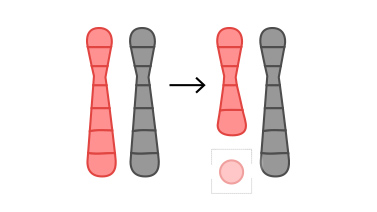
Deletions 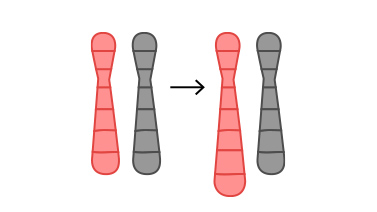
Duplication 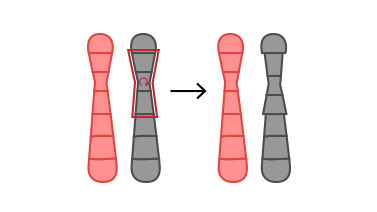
Inversions 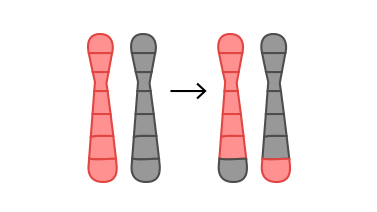
Reciprocal translocation 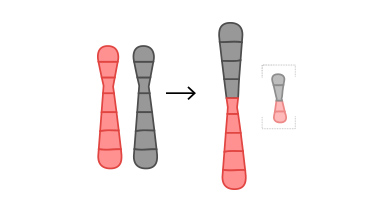
Robertsonian translocation 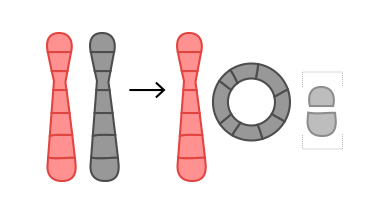
Ring formation
- Deletions: loss of genetic material. The consequences depend on the genes involved.
- Duplication: extra genetic material caused by duplication of a chromosome segment. The consequences depend on the genes involved.
- Inversions: a chromosome segment changes position and the gene pattern alters. If the centromere is not part of the rearranged chromosome segment, the inversion is called a paracentric inversion. If, however, the centromere is part of the inverted segment, the inversion is called a pericentric inversion.
- Translocation: a rearrangement of genetic material between two chromosomes. There are two types of chromosome translocations:
- Reciprocal translocation: segment transfer between two chromosomes. This changes the configuration but not to the total number of chromosomes.
- Robertsonian translocation: fusion of two acrocentric chromosomes. They form a new chromosome and, as a result, the number of chromosomes goes from 46 to 45. In both cases, carriers have reproduction issues.
- Ring formation: this happens when the ends of a single chromosome are deleted and they join together to form a ring or circle.
What is the impact of structural chromosome abnormalities on reproduction?
Couples with structural chromosome abnormalities tend to have reproduction issues. Structural abnormalities can make getting pregnant difficult and it can cause poor semen quality in men and recurrent pregnancy loss and implantation failure in women. This can happen in spontaneous pregnancy or following in vitro fertilisation (IVF) treatment.
Can structural chromosome abnormalities in the embryo be prevented? What are the available reproduction options?
Depending on the type of abnormality that the parent has, a percentage of any embryos that are generated will carry an unbalanced chromosomal abnormality. This will lead to development arrest, failure to implant or pregnancy loss.
Chromosomally normal (euploidy) embryos can be selected in a cycle of in vitro fertilisation with pre-implantation genetic diagnosis (PGD). This is also known as an aneuploidy pre-implantation genetic test (PGT-A). A PGT-A analyses all the chromosome material in the embryo prior to transfer to the mother’s uterus. This means that chromosomally normal embryos can be selected.
What are the available options at Instituto Bernabeu?
At Instituto Bernabeu, if one partner in a couple has a chromosomal abnormality, we perform PGT-A using the latest next generation sequencing (NGS) technology. With this technique, we are able to detect genetic material abnormalities in embryos and, by doing so, select only healthy embryos that guarantee a successful pregnancy.
Paqui Lozano, a biochemist at Instituto Bernabeu
IT MAY ALSO BE OF INTEREST TO YOU:
- Implantation failure and recurrent miscarriage Unit at Instituto Bernabeu
- Sperm meiosis study
- In Vitro Fertilization (IVF) at Instituto Bernabeu
- Klinefelter’s Syndrome and Male Infertility
- Pre-implantation genetic diagnosis or testing (PGD/PGT) at Instituto Bernabeu
- GCT: Genetic compatibility test at Instituto Bernabeu
